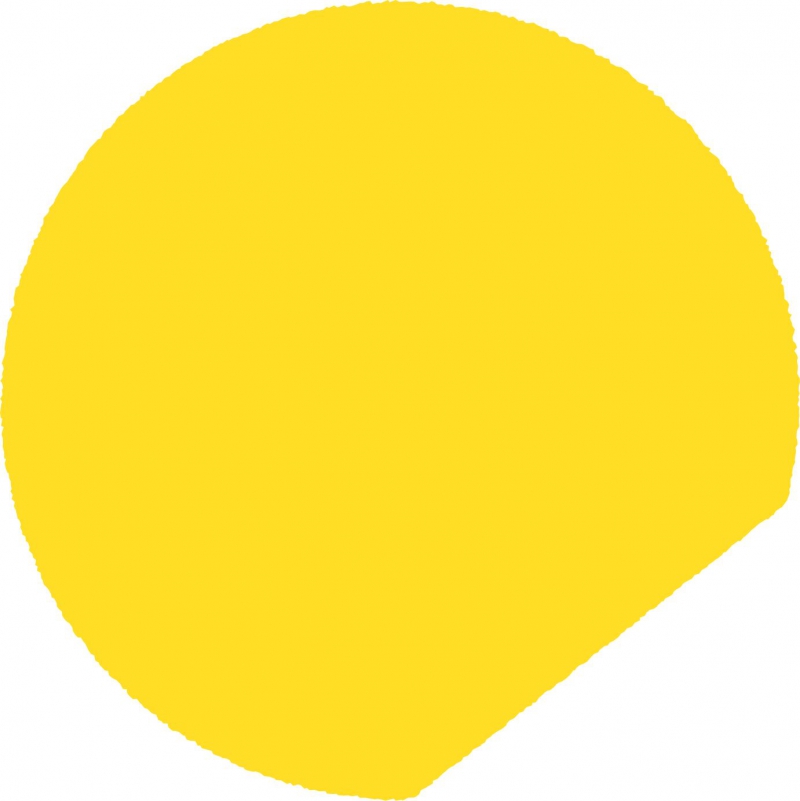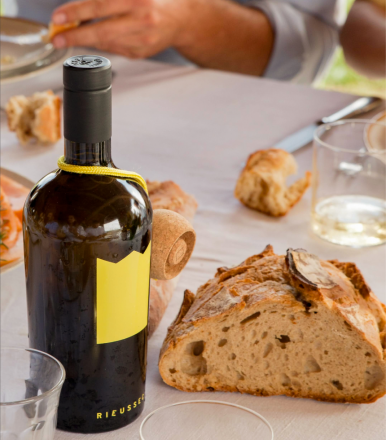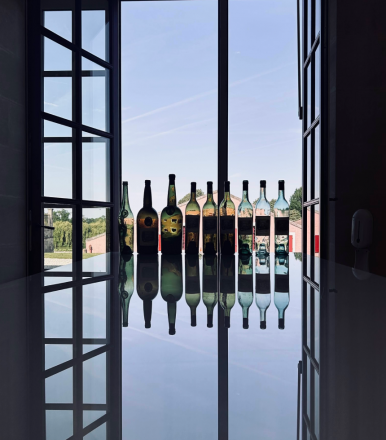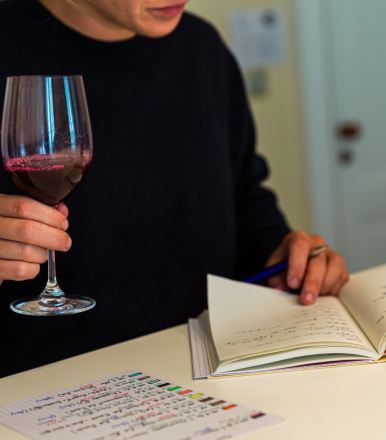
Read Rieussec
Introduction
Owned by Domaines Barons de Rothschild Lafite since 1984, Rieussec is located in the heart of the Sauternes vineyards. Surrounded by water and nature, the property, with its simple and rigorous architecture, stands out for its free contours.
Its unique terroir, combined with the know-how and exemplary viticulture applied by its team, enable it to produce precise, quality wines.
For several generations, the property has been one of the benchmarks of Sauternes, honouring the excellence of know-how and the French art of living.
More rigorous sorting of the grapes and fermentation in barrels, as well as a new cellar built in 1989, have resulted in a finer selection of the blend of each Rieussec Cru, where quality undoubtedly prevails over quantity.
The Vineyard
Rieussec is one of the most important vineyards of this appellation. It extends over 85 hectares at the junction of Fargues and Sauternes, adjacent to Château d’Yquem. Its sandy gravel (80%) and clay (20%) soils have been coveted by many owners since its creation.
The emblematic grape variety of the Rieussec terroir is Sémillon, planted on the majority of the vineyard. The other varieties grown are Sauvignon Blanc (17%) and Muscadelle (3%).
The techniques used in the vineyard are traditional to the Sauternes region. Harvesting takes place from September to November, over a period of 6 to 8 weeks, with several successive selections depending on the state of ripeness of the grapes and the development of botrytis cinerea (noble rot).
Production – at the whim of Mother Nature – is often low. It is said here that one vine produces one glass of wine.
In addition, 100% of the Rieussec vineyard is grassed over. An exception in the Sauternes region.
History
In the 18th century, Rieussec belonged to the monks of the Carmes de Langon and, at the time of the 1855 classification, the quality of its terroir was recognised as a Premier Cru Classé of Sauternes and Barsac.
Then owned by M. Mayne, Rieussec went through several changes of ownership: Charles Crepin around 1870, Paul Defolie in 1892, M. Bannil in 1907, the Gasqueton family, also owners of Château Calon-Ségur in Saint-Estèphe, then F. F. Berry during the war, M. Balaresque in 1957 and finally Albert Vuillier, a passionate lover of the liqueur wines of Sauternes, in 1971.
Rieussec became part of the Domaines Barons de Rothschild Lafite family in 1984 and soon after a new winery was built in the heart of the vineyard. This initiated a constant qualitative effort from the vine to the cellar, between selection, fermentation, and maturation, which was soon rewarded by the remarkable triad of 1988, 1989 and 1990 vintages.
The 1995 – 2005 decade crowns these efforts, with a new series of remarkable wines over which time has no hold. In 2004, Château Rieussec 2001 was even chosen “Wine of the Year” by Wine Spectator magazine.
Our commitment
The Art of Metamorphosis
From the vineyard to the consumer, precision, tradition, innovation and eco-design are all part of the equation.
Moving from transparent bottles to bottles with a recycled glass content of over 90% of the composition allows a real reduction in the carbon footprint of the bottles.
Rieussec joined the B Corp community in December 2023. To learn more, click here.
Read more about Rieussec in our CSR report
The Team
The property is managed by Olivier Trégoat, who is also technical director of Château L’Évangile, Château Paradis Casseuil, Domaine d’Aussières and Domaine de Long Dai. He works in the field with Mathieu Crosnier, the operations director. Mathieu’s team consists of Mathieu Desblancs, the vineyard manager and Bertrand Roux, the cellar master.
The Wines
In Sauternes, our wonderful botrytis develops to grant the wines of Rieussec their unique richness. To create a delicate osmosis between this noble rot and our grapes, for a space of several months, we harvest each berry at the ideal moment.
For several generations, Château Rieussec has been one of the leading Sauternes wines. Classified 1er Grand Cru in 1855, it artfully combines Sémillon, Sauvignon and Muscadelle. A vin de garde (for ageing,) it reveals itself and surprises at each stage of its development: If kept in a cool place once opened, it can be enjoyed for several weeks without altering and marries a thousand flavours from midday to midnight.
Carmes de Rieussec, the second wine, is selected based on the same criteria as Château Rieussec. It expressed beautiful aromatics, with a dominant citrus palette. Its name is a reference to the Carmes de Langon monks.
R de Rieussec, a blend of Sémillon and Sauvignon, is the new face of a great dry white wine from Bordeaux. Fresh and aromatic, it is partly made from the same vines as Sauternes. Twenty percent of the wine is fermented in barrels. This technique leads to excellent ageing potential while it preserves the freshness and fruitiness of the grapes.
 Read next
Read next


